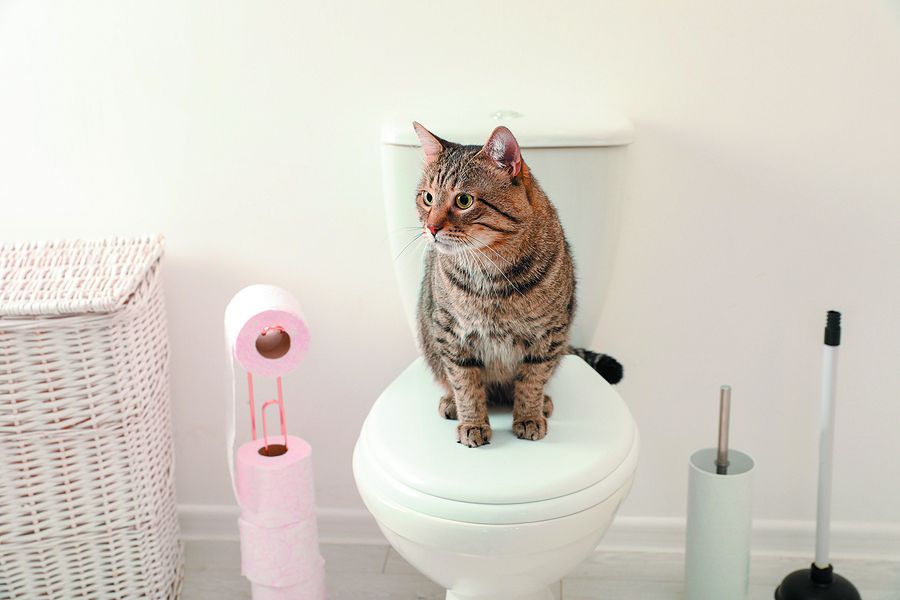Hazards of Flushing Cat Poop Down Your Toilet - Avoid Potential Problems
Hazards of Flushing Cat Poop Down Your Toilet - Avoid Potential Problems
Blog Article
Have you been on the lookout for details about How to Dispose of Cat Poop and Litter Without Plastic Bags?

Intro
As pet cat owners, it's essential to be mindful of how we take care of our feline good friends' waste. While it may appear hassle-free to purge pet cat poop down the toilet, this method can have harmful repercussions for both the setting and human wellness.
Alternatives to Flushing
Thankfully, there are much safer and a lot more responsible means to throw away cat poop. Think about the following options:
1. Scoop and Dispose in Trash
One of the most common technique of disposing of feline poop is to scoop it right into a biodegradable bag and throw it in the trash. Make sure to make use of a dedicated litter scoop and throw away the waste without delay.
2. Usage Biodegradable Litter
Opt for biodegradable cat litter made from materials such as corn or wheat. These litters are environmentally friendly and can be safely dealt with in the trash.
3. Bury in the Yard
If you have a yard, take into consideration hiding feline waste in an assigned area away from veggie gardens and water sources. Make certain to dig deep sufficient to stop contamination of groundwater.
4. Mount a Pet Waste Disposal System
Purchase a family pet garbage disposal system especially developed for feline waste. These systems use enzymes to break down the waste, decreasing odor and ecological effect.
Health Risks
Along with environmental problems, flushing cat waste can additionally present wellness threats to people. Pet cat feces may include Toxoplasma gondii, a parasite that can cause toxoplasmosis-- a possibly severe disease, specifically for expecting women and individuals with weakened immune systems.
Environmental Impact
Flushing pet cat poop presents harmful microorganisms and bloodsuckers into the water, positioning a considerable danger to marine ecosystems. These contaminants can negatively impact marine life and compromise water quality.
Verdict
Accountable pet possession expands beyond supplying food and shelter-- it likewise entails correct waste administration. By refraining from flushing pet cat poop down the bathroom and selecting alternative disposal approaches, we can lessen our environmental impact and safeguard human health.
Why Can’t I Flush Cat Poop?
It Spreads a Parasite
Cats are frequently infected with a parasite called toxoplasma gondii. The parasite causes an infection called toxoplasmosis. It is usually harmless to cats. The parasite only uses cat poop as a host for its eggs. Otherwise, the cat’s immune system usually keeps the infection at low enough levels to maintain its own health. But it does not stop the develop of eggs. These eggs are tiny and surprisingly tough. They may survive for a year before they begin to grow. But that’s the problem.
Our wastewater system is not designed to deal with toxoplasmosis eggs. Instead, most eggs will flush from your toilet into sewers and wastewater management plants. After the sewage is treated for many other harmful things in it, it is typically released into local rivers, lakes, or oceans. Here, the toxoplasmosis eggs can find new hosts, including starfish, crabs, otters, and many other wildlife. For many, this is a significant risk to their health. Toxoplasmosis can also end up infecting water sources that are important for agriculture, which means our deer, pigs, and sheep can get infected too.
Is There Risk to Humans?
There can be a risk to human life from flushing cat poop down the toilet. If you do so, the parasites from your cat’s poop can end up in shellfish, game animals, or livestock. If this meat is then served raw or undercooked, the people who eat it can get sick.
In fact, according to the CDC, 40 million people in the United States are infected with toxoplasma gondii. They get it from exposure to infected seafood, or from some kind of cat poop contamination, like drinking from a stream that is contaminated or touching anything that has come into contact with cat poop. That includes just cleaning a cat litter box.
Most people who get infected with these parasites will not develop any symptoms. However, for pregnant women or for those with compromised immune systems, the parasite can cause severe health problems.
How to Handle Cat Poop
The best way to handle cat poop is actually to clean the box more often. The eggs that the parasite sheds will not become active until one to five days after the cat poops. That means that if you clean daily, you’re much less likely to come into direct contact with infectious eggs.
That said, always dispose of cat poop in the garbage and not down the toilet. Wash your hands before and after you clean the litter box, and bring the bag of poop right outside to your garbage bins.
https://trenchlesssolutionsusa.com/why-cant-i-flush-cat-poop/

We hope you liked our article about Don’t flush cat feces down the toilet. Thanks a lot for taking a few minutes to read through our short article. You should take a moment to share this blog if you enjoyed reading it. Thank you for your time. Please stop by our website back soon.
Call Today Report this page